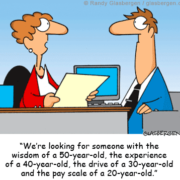Have You Started Your Second-half Reinvention Yet?

The January-February 2018 issue of the AARP Bulletin included a nine-page article entitled “Great Second Careers” Sub-title: “Good news: You CAN Find Success, Security and Happiness After 50 With a New Job.”
Not totally boring. Kind of a band-wagon article. An eclectic collection of stories of people who made late-life pivots to jobs or businesses earning themselves from $0 to $250K per year.
I love how AARP has changed its tune. It’s like the tiger has changed its stripes.
You remember them, don’t you? Used to be the American Association of Retired Persons, the highly-profitable, “non-profit” insurance seller disguised as a crusader/advocate for the retired and the “elderly-in-training.”
Now it’s just AARP. An acronym with no words behind it.
You have to hand it to them. They were smart enough to get off a slowing train and get on a faster moving one, wisely repackaging/rebranding/retreating to a more appropriate moniker. Got that word retirement out of the name – and changed their tune. They don’t talk retirement so much anymore. In fact, not one article in the aforementioned 56-page bulletin about retirement.
Could there be a much stronger statement to the evolving nature of traditional retirement? As in, going away.
DISCLAIMER
Please know that I don’t have an AARP membership nor do I subscribe to the Bulletin – nor will I ever. It was sent to me by a friend who knows of my passion for “pivoting” people’s view of retirement.

In fact, I’ve never liked AARP since they started invading my mailbox, a quarter-century ago, with promo materials six hours before my 50th birthday, hinting strongly that I was now over the hill, fast approaching senior status and deserving of discounts on restaurants and travel destinations where other elders-in-training hung out.
Didn’t sound like fun at the time – still doesn’t.
But, despite my disdain for the organization, I applaud the nature of the article because it draws attention to the growing awareness that work promotes vitality, that creative energy doesn’t die with age, and that over-50 is far from over-the-hill.
Oh, and without saying it, that traditional retirement kinda sucks.
It’s a collection of tales of personal reinvention.
Have you started your reinvention yet?
Reinvention is a hot word these days, especially in business circles. It seems if a company isn’t reinventing, it will soon be toast, like a Blockbuster or a Borders or Kodak or a Blackberry. Who’s next? Macy’s? GE? Healthcare giants? It’s likely to be a bloody trail of business bodies over the next ten years.
But what about us mere mortals? Do we run the same risk? What happens if reinvention isn’t part of our short- or long-term perspective? Is there a chance that we can be similarly Netflixed, Amazoned or I-phoned?
From my perspective, it’s a pretty easy yes to that question. The recruiting business immerses one in lots of transition stories. I meet people who are aware of, accepting of, and acting on the fact that the pace of change has never been faster or more profound than what we are experiencing today. They are sensing the need to reinvent, augment, pivot or re-career to stay ahead of, or up with, the change curve.
Unfortunately, I meet far more who are late to the party. As in having the rug pulled out from under them and not seeing it coming. Or pro-actively leaving a dead-end job only to find that they are ill-equipped to re-enter at another point.
What worked five years ago doesn’t work today.
What is reinvention anyway?

I’ll borrow a few thoughts and mix in a few of my own as to what “reinvention” means for someone moving into the second half of life.
If you follow James Altucher (NOTE: proceed with caution if you start following him – he is a wonderfully strange, esoteric, transparent dude!), you know that he has a best-seller entitled “Reinvent Yourself”. This is a guy who tries to reinvent himself every day.
That would be a stretch for those of us who are new to the idea but here’s his view of reinvention, from a guy who has reinvented himself in major ways 15-20 times in his 50 years. To Altucher, reinvention is:
- Finding new sources of income. Money is important – it buys freedom. He reminds us that multi-millionaires have, on average, seven distinct sources of income.
- Finding well-being – from within. It’s three things: freedom, relationships, and competence.
- Defining freedom in different ways e.g. reducing expectations, increasing sources of income so no one source controls you.
- Improving relationships. Find mentors to teach you and friends who challenge and build you up.
- You are the average of the five habits you do; for example, what you eat, ideas you have, the content you consume.
It’s an old story now that long-standing, traditional white- and blue-collar jobs are succumbing in droves to globalization and the impact of digitization. With that comes sob story after sob story from those caught in this transformation.
I don’t see any signs of this pace and magnitude of change abating. In fact, with advancing technologies like artificial intelligence, robotics, genomic testing, 3-D printing, nano-technology to name just a few, all signs point to this transformation continuing at an accelerating pace.
Finding your essence
If you are an AARP fan and have read the article, you will have detected a common theme running through nearly all the stories – the pursuit of a dream or a passion. All of these “second-careerers” reinvented themselves by regathering their skills and experiences and stirring them into that passion to achieve a dream. And they plugged that dream into a need in the marketplace.
I liken it to a rediscovery of the “essential self”, more or less a resurrecting of that 6-year old in each of them that had been tamped down with 30 years or so of cultural social expectations.
A favorite quote that I repeat every morning speaks to transformation by identifying your essential self. It comes from Martha Beck’s fantastic book “Finding Your Own Northstar, Claiming the Life You Were Meant to Live.”
“Freed from rigid social expectations, focused firmly on your essential self, you stop conforming to any of the pre-designated patterns of your cultural environment. Instead, you turn your life into a work of art, an absolutely original expression of your unique gifts and preferences.”
Each of our lives can be a work of art. My sense is that most of the folks in the AARP article are heeding the call of their essential self, scaping off the social barnacles, stepping out, taking some risks and striving to make their lives their own work of art.
We all have access to all the riches of the universe to do the same. None of that changes because we hit a certain number.
Please don’t stop learning
I had a conversation recently with a C-level healthcare executive who had just worked his way out of a consulting job after successfully transforming the operations of a large mid-western healthcare system. In his late-50’s, he has a fearless excitement about what his next challenge will be as he puts himself out there for another position.
It was obvious from our conversation that this successful exec “gets it” when it comes to staying ahead of the curve of developments in his area of focus. I asked him what advice he would have for anyone making a mid-life or later career transition. He answered without hesitation:
- Be active in the virtual space
- Be active in the face-to-face space
- Read, read, read!
- Learn the skills to navigate change while knowing that you can’t or won’t learn everything and knowing that things will be different in six months.
- Consider a coach
Sage advice from a guy who knows what he wants to do and where he wants to go and has learned how to maximize his chances of getting there through continuous learning and reinvention. After hearing him talk, I have little doubt he will have lots of attractive options presented to him.
That’s what it takes today. To not reinvent is perilous.
I’d love to hear your reinvention story. Scroll down and tell me what you’ve done, why you did it and how you did it. Or email me at gary@makeagingwork.com. Share your story and so we can share it with our readers.




 George Burns was guilty of some really fabulous quotes, most of them quite funny, some deadly serious. Many had to do with his advancing age (he died in 1996 at age 100). Here are a few:
George Burns was guilty of some really fabulous quotes, most of them quite funny, some deadly serious. Many had to do with his advancing age (he died in 1996 at age 100). Here are a few:








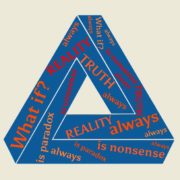
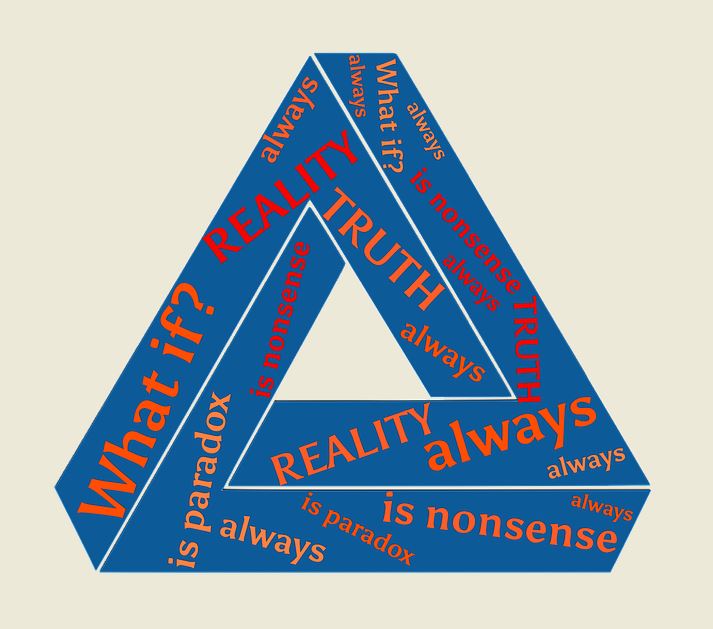
 I see this frequently as I engage potential candidates regarding executive or middle-management opportunities in my recruiting business. Because most of the positions call for deep experience and expertise in a given area, I’m often reaching out to professionals who have entered the “second half” or “third stage” of their lives – likely facing fewer days ahead than behind.
I see this frequently as I engage potential candidates regarding executive or middle-management opportunities in my recruiting business. Because most of the positions call for deep experience and expertise in a given area, I’m often reaching out to professionals who have entered the “second half” or “third stage” of their lives – likely facing fewer days ahead than behind.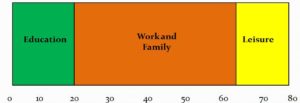 Learning after school didn’t go much beyond what the job required and the pace of change, until digitization arrived, was mostly modest and manageable without much skills upgrade. Today, new technologies are rapidly outstripping and obsoleting many skills and may be dropping your value in the marketplace. Gaps will be revealed quickly in the job search process. It’s imperative in today’s job market to stay current and continuously upgrade your skill set to be in step with technology developments.
Learning after school didn’t go much beyond what the job required and the pace of change, until digitization arrived, was mostly modest and manageable without much skills upgrade. Today, new technologies are rapidly outstripping and obsoleting many skills and may be dropping your value in the marketplace. Gaps will be revealed quickly in the job search process. It’s imperative in today’s job market to stay current and continuously upgrade your skill set to be in step with technology developments.
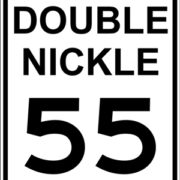
 That’s the reality. Over 80% of jobs are filled in this country as the result of referrals and networking. And that’s despite all the chest-thumping, flag-waving and heavy advertising by the likes of Indeed.com, ZipRecruiter, and myriad other popular job boards (has anybody seen Monster or CareerBuilder lately? – it seems they’ve left the party).
That’s the reality. Over 80% of jobs are filled in this country as the result of referrals and networking. And that’s despite all the chest-thumping, flag-waving and heavy advertising by the likes of Indeed.com, ZipRecruiter, and myriad other popular job boards (has anybody seen Monster or CareerBuilder lately? – it seems they’ve left the party).






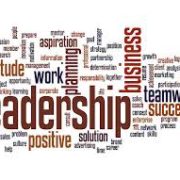



 Resume
Resume


 In this part-one of a three-part series on “Double-nickeled and Stuck! Getting re-employed at 55 or beyond”, we will begin to take a look at the reality of what it takes to regain meaningful employment in today’s rapidly evolving workplace and at the process it takes to be prepared for the challenges ahead.
In this part-one of a three-part series on “Double-nickeled and Stuck! Getting re-employed at 55 or beyond”, we will begin to take a look at the reality of what it takes to regain meaningful employment in today’s rapidly evolving workplace and at the process it takes to be prepared for the challenges ahead.

